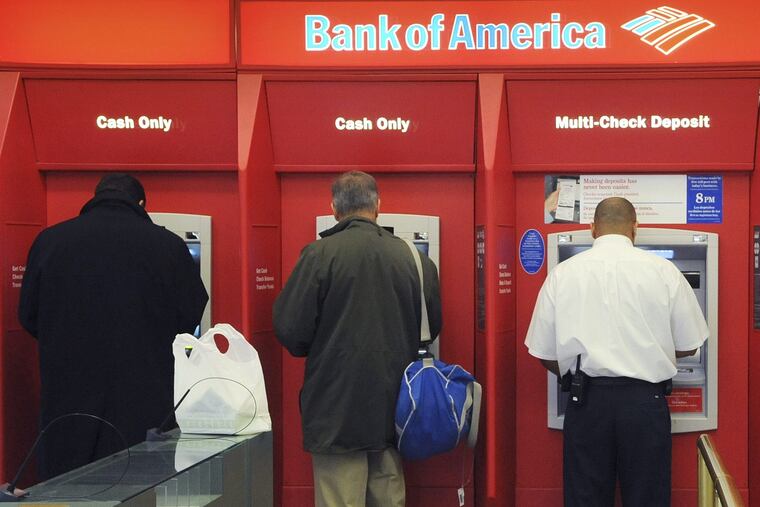Philly’s ‘unbanked’ population didn’t budge in 2017
Nearly 6 percent of households in the Philadelphia region didn't have a bank account in 2017, and 22 percent more are considered "underbanked," according to the FDIC.

Nearly 6 percent of households in the Philadelphia region didn't have a bank account in 2017, an essentially unchanged rate from two years earlier, according to a federal government survey released Tuesday.
The Federal Deposit Insurance Corp. (FDIC) found that an additional 22 percent of area households are "underbanked" because they have bank accounts but still use alternative financial services, such as check cashers.
The FDIC's previous survey, in 2015, reported that roughly 4 percent in the Philadelphia region were unbanked and 19 percent were underbanked. The slight increase in both rates last year is not statistically significant, according to the FDIC.
In statistical terms, there is a 90 percent chance the region's unbanked rate was between 3.5 percent and 9.4 percent in 2017, according to the survey. The probable range two years earlier was 2.6 percent to 6.6 percent.
Nationwide, the share of households without a checking or savings account fell half a percentage point to 6.5 percent, continuing a steady decline from a high of 8.2 percent in 2011. The FDIC estimates 8.4 million U.S. households were unbanked in 2017.
Among the 10 largest metropolitan areas, unbanked rates ranged from 2.6 percent in the Washington, D.C., area to 11.8 percent in the Houston region.
The survey of more than 35,000 households was conducted in June 2017 with help from the U.S. Census Bureau.
FDIC officials attributed the nationwide decrease almost entirely to improvements in the socioeconomic circumstances of U.S. households, such as higher employment and education levels.
Unbanked and underbanked rates were higher in lower income, less educated, younger, black and Hispanic, and working-age disabled households, and among those with volatile income, the FDIC found. For example, the unbanked rates for black and Hispanic households were roughly 17 percent and 14 percent, respectively, compared with 3 percent in white and 2.5 percent in Asian households.
"It's encouraging to see that more people have signed up for a bank account across the country," Mike Townsend, spokesman for the American Bankers Association, said in a statement. "America's banks want to make sure everyone has access to the financial products they want and need, and we look forward to working with the FDIC and others to make that happen."
Bank-less consumers can incur high transaction costs to cash checks and pay bills through third parties, and they can also miss out on future opportunities for traditional loans by not establishing a financial history, experts and advocates say. But the prospect of recurring overdraft charges, hidden fees, and minimum balance requirements makes consumers leery of opening bank accounts. The top reason cited for being unbanked was "not enough money to keep in account," followed by "don't trust banks," the survey found.
"One doesn't have to look too hard to find banking scandals that shake public confidence in financial institutions, and I know that as concerns around privacy, fraud, and security increase, necessary anti-fraud measures at the time of account opening increase barriers to account openings," said William Hall, Philadelphia's financial empowerment program manager.
The Pennsylvania Department of Banking and Securities is exploring another possible reason: the rise of financial technology products, such as peer-to-peer payment service Venmo. Earlier this year, the department surveyed more than 2,000 millennials, seeking to learn whether younger consumers prefer fintech products over traditional bank accounts and how that may affect the size of the unbanked population. The study is not yet complete.
It makes sense to look at that, said Edward Novak, the department's communications director. "Maybe they've looked at traditional bank accounts and said, 'I don't need that.'"
The FDIC survey found that mobile banking was used by 40.4 percent of banked U.S. households to access their accounts, nearly double the 23.2 percent four years earlier. Online banking was used by 63 percent of households.
Other findings include one in five U.S. households did not use mainstream credit in the prior 12 months, and therefore may lack a credit score.